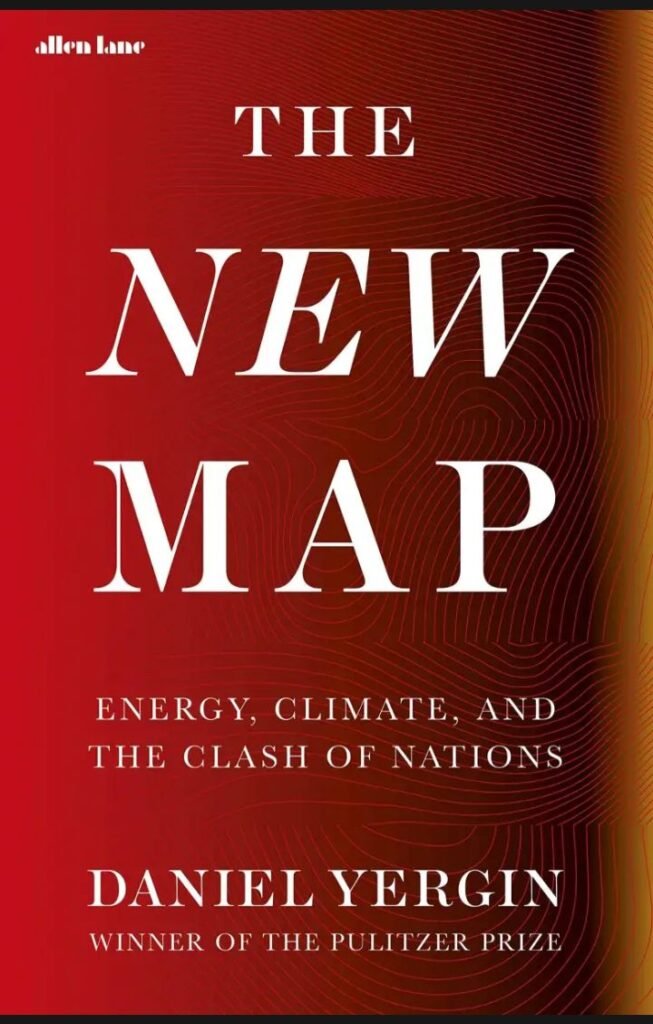Author and Pulitzer Prize winner Daniel Yergin is an expert in the fields of economics, politics, and energy. His projection of a new world map based on the interaction of these three sectors is a detailed outcome of the series of books that he wrote prior to this book; ‘The Quest: Energy, Security, and the Remaking of the Modern World’, and ‘The Prize: The Epic Quest for Oil Money and Power’. The interplay of energy and geopolitics is evident in all of his books, and it is in this book that he openly declares energy is central to geopolitics. However, he takes a step further to include the contemporary global climate debate and the way it influences countries in shaping their foreign policies.
He takes his readers on a journey of the new maps of America, Russia, China, and the Middle East largely shaped by energy resources. Given the author’s experience, it makes sense that the interaction between a state’s energy policies and its behaviour toward other states would be a recurring theme throughout all of these chapters. Whether it is the shale revolution of the US in 2019 which made US entry into the world energy market possible, or Russia using gas as a tool to maintain its leverage over Europe, or Beijing strengthening its ties with Moscow because it sees Russia as a potential source of energy for its expanding economy and population, or Saudi Arabia’s attempts to wean her country off its reliance on the resources found beneath its deserts and adapting to the fast-changing world.
The book opens with the shale revolution in the US, which provided increased energy security and lessened its dependence on huge energy imports. This has allowed the US to become one of the world’s top energy exporters and rebalance global geopolitics. As soon as that happened, the US posed itself as an LNG salesman when LNG started to be used as a weapon in trade disputes. The author states that the global oil and gas market has changed as a result of the shale revolution as it has thus changed the previous arrangement of ‘OPEC versus non-OPEC’ into a new paradigm which is the ‘Big Three’ that includes the US, Russian, and Saudi Arabia. Consequently, during the 2020 oil market crisis, communication among the three nations increased. This is how energy remains a crucial component of geopolitics.
The author puts on the same spectacle in explaining the behaviours of Russia, China, and the Middle East under the auspices of energy security. China flexing its muscle in the South China Sea, and China and Russia’s budding alliance have one determining force in the background — energy security. As the author turns his attention to the Middle East, he largely explains the monarchies’ changed attitudes towards global openness and modernization in the context of changing energy mix which requires adding new energy resources into the mix like solar, and wind, and the need for a technological upgrade to achieve it.
In the second half of the book, Yergin’s whole argument is built on significance of 21st century’s technological revolution which might speed up this energy transition. The arrival of robots, artificial intelligence, and auto-tech into the industrial scene will change the overall geopolitics game board when the relevance of traditional energy resources will dwindle at the hands of new ones. This will happen when technological upgrades will lead to improved renewables’ efficiency to capture, store, and transport energy. The growing need for energy transition and growth of renewables are direct outcomes of occurrence of global green deals at an unprecedented rate among nation-states since climate change has been declared a global
emergency. The trending climate discourse has created such a consciousness among people, especially among the Millennials, and Gen Z, which has created an urgent global demand for a technological upgrade. What follows is that, in a world of great power competition, fragmented globalisation, and rethought global supply chains, geopolitics will continue to be a part of the new energy mix, just as it is in the existing energy mix.
However, will the Covid-19 crisis expedite or slow this energy transition? The question is left open-ended. Nevertheless, amidst this energy transition, Global South might benefit from these changing political, technical, and economic maps. For one because the origins of resources for renewables and minerals needed in the technological upgrade can greatly be found in the Global South. Moreover, such a transition might create new risks for conflict. How and where? These answers are discussed in the final chapters of the book but are not elaborated on.
Altogether, this book is an extensive read to start with if anyone is interested in learning more about how international relations and foreign policy of states are affected by energy resources. All of the chapters reflect the theme of the interplay of energy and geopolitics and sketch the multiple maps of the regions discussed above. However, Yergin’s mention of India, Europe, and Japan as world’s biggest consumers is missing. He gives limited attention to Africa, Latin, and South America, and South Asia, given that these regions are likely to have an impact on the ability of the globe to combat climate change. Also, the argument that the relevance of traditional energy sources is on decline is something that might take decades or even a century to actualize, given that even the developed countries still greatly rely on these energy sources and are frequently extending their net-zero timelines.
CASS LAhore

The Centre for Aerospace & Security Studies (CASS) was established in July 2021 to inform policymakers and the public about issues related to aerospace and security from an independent, non-partisan and future-centric analytical lens.
CASS Newsletter
CASS Galleries

@2025 – All Right Reserved with CASS Lahore.


